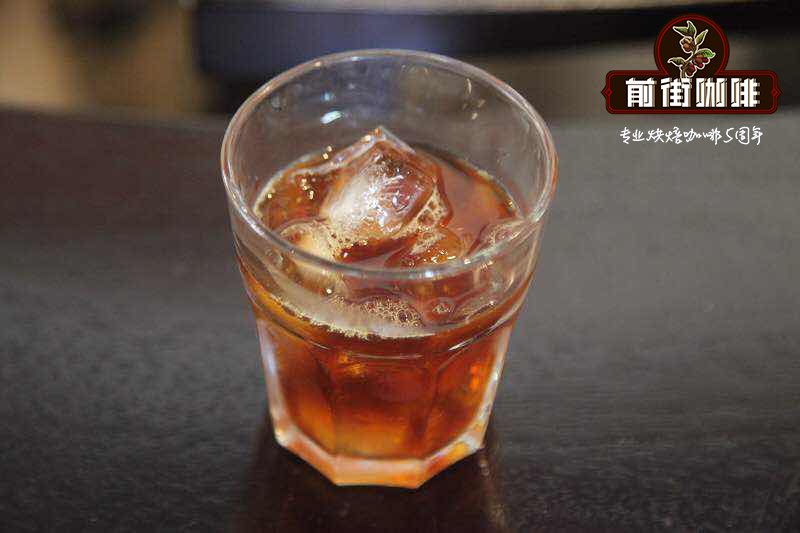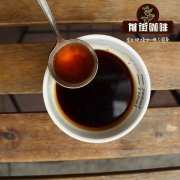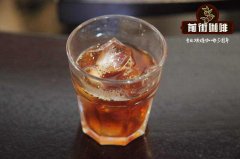[unique wet planing] the smell of Manning in Aceh, Sumatra? Sumatra Mante

Professional coffee knowledge exchange more coffee bean information please follow the coffee workshop (Wechat official account cafe_style)
[unique wet planing] the smell of Manning in Aceh, Sumatra? The story of the origin of Sumatra Mantenin coffee beans?
Indonesia is the largest archipelago country in the world. Arabica coffee was introduced and planted during the Dutch colonial period in the 18th century, until it became the top five coffee producing country in the world in modern times. the main producing areas are Sumatra, Java and Sulawesi. The northern part of Sumatra is relatively high above sea level. Aceh, where Lake Tawar is located, and North Sumatra, where Lake Toba is located, are two major Arabica coffee producing areas. Aceh province, located in the northeast of the Indonesian island of Sumatra (Sumatera), is adjacent to two important coffee producing areas in Indonesia: the Gayo Mountains and Lake LakeToba. The coffee tree species it grows is Arabica, which is also known as Mandheling in northern Sumatra. In just two weeks, we mainly visited the Gayo coffee bean producing area in Benermeriah County.
There is a unique global way to handle coffee in Indonesia, which is called "wet shelling". This special treatment can only be found in Indonesia. As the name implies, coffee beans are shelled before they are dried, and the wet coffee beans continue to be dried to 12% to 13% before they are exported. Aceh Mijaya is located on the hillside of the lake, about 1200-1400 meters above sea level. Coffee grows along the hillside, and it is even more necessary to resist the oncoming strong winds on the lake. Before the raw beans are exported, they are specially arranged to go through three hand-selected defects in the dry processing plant. In the presentation of flavor, in addition to the typical rich taste of Indonesia, it also has charming citrus acidity, a lingering aftertaste, a lively factor in a mild fragrance, a leaping slight acid mixed with the most intense aroma, and a lingering aftertaste.
Indonesia straddles both sides of the equator, the hot and humid rainforest climate is rich in rainfall, and there are fertile volcanic loam soil that bring rich nutrients to coffee. However, due to the remote and inconvenient transportation, coffee was not planted until 1924. Most of them adopt organic cultivation with traditional shade and no pesticides. The local climate is humid, and the shelled beans are initially washed and fermented, and the moisture content of raw beans is still 30% and 50% after 2 days of exposure, that is, peeling off the seed shell and then continuing to dry, so as to shorten the drying schedule of raw beans; after about 2 days of drying, the moisture content of raw coffee beans can be reduced to 12%. This unique semi-washing method in Indonesia is called Giling Basah by locals, also known as wet stripping (wet-hulled).
The Sumatran Arabica coffee, commonly known as Mantenin, comes from the local ancient aboriginal people. it is rumored that the Japanese occupied Sumatra in the 1940s, and a soldier was surprised by the coffee he drank in North Sumatra. and ask the locals what kind of coffee it is. However, due to the lack of language, the other party misunderstood him to ask him who he was, and replied that he belonged to the Mandaining tribe. Later, it became Mantenin because of the mispronunciation, which became synonymous with Sumatran coffee under the difference between yin and yang.
Producing area: Aceh Province, North Sumatra
Producer: local small farmers
Treatment method: wet peeling treatment
Classification: 15 Mutual 18 items
Altitude: 1000 Murray 1600m
Varieties: Catimor, Caturra, Typica, Sidikalong
Flavor: fresh-cut Chinese fir, cream, roasted almonds, licorice, dark chocolate, thick taste
Because of the wet relationship at the beginning, the "wet shelled" coffee is easy to produce a lot of defective beans, so the vast majority of 'Manning' coffee is used as commercial beans, but if handled well, which kind of delicacy is inconceivable. It is a very special "exotic flavor" that no other coffee can drink.
Qianjie recommended cooking:
Filter cup: KONO filter cup
Water temperature: 88 degrees
Degree of grinding: small Fuji degree of grinding 4
Cooking method: the ratio of water to flour is 1:14, 17g powder, 25g water for the first time, steaming for 30s, and 238g water for the second time. The extraction time is about 2:30 seconds.
Analysis: there are not many ribs at the bottom of the Kono cup, and the filter paper clings to the filter cup to achieve the purpose of limiting air flow, which can make water and coffee powder have longer contact soaking time in the filter cup and ensure the extraction time and extraction rate of rough grinding. In this way, the coffee powder can be fully extracted, enhance the mellow taste and make the taste more concentrated.
Flavor: well balanced, clean, thick and solid on the palate, with a long dark chocolate finish.
Important Notice :
前街咖啡 FrontStreet Coffee has moved to new addredd:
FrontStreet Coffee Address: 315,Donghua East Road,GuangZhou
Tel:020 38364473
- Prev

Sumatran Coffee beans-the taste and flavor of Mantenin in Lake Toba? Lin Dong Manning, Qianjie
Professional coffee knowledge exchange more coffee bean information please follow the coffee workshop (Wechat official account cafe_style) Sumatra coffee beans-Lake Toba Lindong Manning taste and flavor? What is the price of Lindong Manning coffee beans on Qianjie Street? [small package 100g] Indonesia Sumatra Mantenin deep roasted boutique coffee beans Toba Lake is located in the motor plateau of northern Sumatra, Indonesia.
- Next

How does Jamaican Blue Mountain Coffee taste? Is the price of the front street Jamaican Blue Mountain coffee expensive? Jamaica
Professional coffee knowledge exchange more information about coffee beans Please follow the coffee workshop (Wechat official account cafe_style) how does Jamaica Blue Mountain Coffee taste? Is the price of Jamaican Blue Mountain coffee on the front street expensive? What are the coffee producing areas in the Blue Mountains of Jamaica? Jamaican coffee beans have a long history. In 1728, the then British Governor Nicholas Lowe Sir Nicholas Lawes, from
Related
- Detailed explanation of Jadeite planting Land in Panamanian Jadeite Manor introduction to the grading system of Jadeite competitive bidding, Red bid, Green bid and Rose Summer
- Story of Coffee planting in Brenka region of Costa Rica Stonehenge Manor anaerobic heavy honey treatment of flavor mouth
- What's on the barrel of Blue Mountain Coffee beans?
- Can American coffee also pull flowers? How to use hot American style to pull out a good-looking pattern?
- Can you make a cold extract with coffee beans? What is the right proportion for cold-extracted coffee formula?
- Indonesian PWN Gold Mandrine Coffee Origin Features Flavor How to Chong? Mandolin coffee is American.
- A brief introduction to the flavor characteristics of Brazilian yellow bourbon coffee beans
- What is the effect of different water quality on the flavor of cold-extracted coffee? What kind of water is best for brewing coffee?
- Why do you think of Rose Summer whenever you mention Panamanian coffee?
- Introduction to the characteristics of authentic blue mountain coffee bean producing areas? What is the CIB Coffee Authority in Jamaica?

